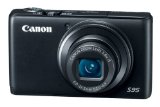 When looking for a new camera why do so many people seem to think it’s all about the megapixels? Unfortunately, marketing plays a part in this and leads many people to believe that they need a camera with 14MP or more to take high quality pictures. That is just not the case. Megapixels are not the most important aspect of choosing a digital camera. Performance is what counts.
When looking for a new camera why do so many people seem to think it’s all about the megapixels? Unfortunately, marketing plays a part in this and leads many people to believe that they need a camera with 14MP or more to take high quality pictures. That is just not the case. Megapixels are not the most important aspect of choosing a digital camera. Performance is what counts.
Cameras with more megapixels do not always produce better images. Sure, if you are operating under ideal circumstances a camera with a higher number of megapixels may produce photos with more detail, but unless you are making enormous poster prints it is probably overkill. You very likely don’t need a super high MP camera unless you are doing a lot of cropping or making huge prints on a regular basis.
To produce a high quality image, a high quality lens is critical. Among the top digital cameras with a built-in lens, models usually have a lens with an aperture setting of f/2 or f/1.8. In fact, you will find that many 10MP cameras rank just as well as 14 or 16MP cameras because those specific cameras have very good lenses and produce very good images in regular light, low-light situations and with flash.
Also keep in mind that if you are taking photos with a 14MP or 16MP camera, those images are going to take up an awful lot of storage space and will fill up your memory card faster.
Better cameras usually feature at least a 3-in LCD with very good display quality. These days, with a few exceptions most compact and subcompact cameras do not have viewfinders, so you need to rely on the display.
Higher end cameras also often have a higher optical zoom lens without adding a lot of extra bulk. Some larger models have super zooms that will give you up to 35x, which is, in terms of 35mm, 24-849mm. In the past, many super zooms’ image quality suffered somewhat because of a tradeoff between zoom capability and image quality, but there have been big improvements. Today you can find a number of high zoom models among the top rated digital cameras offering very good prints. You will have to move up to a digital SLR camera, at a much greater price, for even higher image quality.
When evaluating cameras, some of the considerations reviewers look at include:
- the weight, size and feel of the camera in the hand
- battery life
- ease of use — are the buttons convenient, is the menu decipherable
- optical zoom
- display quality
- image quality
- response time
- quality of flash photos and images taken in low light
- wide-angle capability
- does it have an optical or electronic viewfinder
- response time
- the camera’s versatility
- does it have HD video and what is the video quality
So, the bottom line, is when you see a list of recommended cameras, don’t be surprised to find that some of the best ranked products are mid-level megapixel models.
